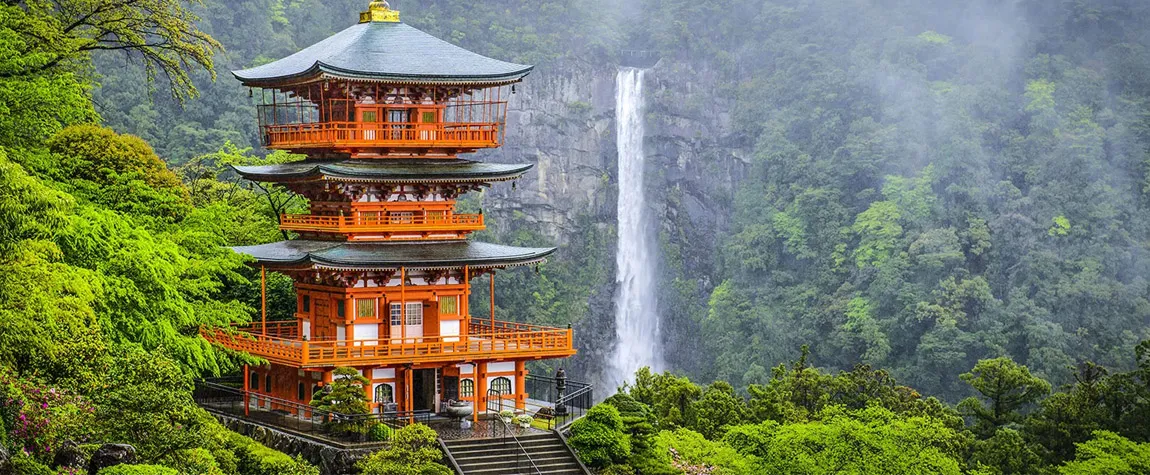Top 10 Most Notable Japanese Temples and Churches You Must Visit

Japan’s most famous temples and churches are representative of the country’s varied religious customs. These revered locations, which range from the calm grounds around Tokyo’s Meiji Shrine to the calm beauty of Kyoto’s Kinkaku-ji (Golden Pavilion), are not only architectural wonders but also records of long-standing customs and cultural value. Explore Japan’s spiritual heart and uncover deep beauty these holy places hold, you’re enjoying beautiful woodwork of Horyu-ji in Nara or thinking about stark beauty of Tofuku-ji Zen temple in Kyoto.
It takes careful work to obtain Japan visa, but once you have it, you may explore world of modern and cultural wonders. Potential travellers need to understand complexities of paperwork, such as passport images, visa application forms, and evidence of stable finances. Embassies and visa offices become checkpoints along the route for curiosity among the busy streets of Delhi. Not only does each stamp and signature indicate authorization to enter Japan, but they also extend an invitation to fully experience beauty of Kyoto’s cherry blossoms, peacefulness of Nara’s temples, and energy of Tokyo’s lively city. The Japan visa from Delhi opens the door to an exciting journey where the mix of tradition and innovation is just waiting to be discovered. It goes beyond administrative processes.
Here are Discover the Rich History and Beauty of Japanese Temples and Churches
1. Kinkaku-ji (Golden Pavilion) – Kyoto:

The Zen Buddhist temple Kinkaku-ji, whose history goes back to the 14th century, is famous for its beautiful architecture. The pavilion’s upper two floors are completely covered in gold leaf, which gives it a dazzling aspect that reflects on the nearby pond and creates a gorgeous view that has attracted tourists for many years.
2. Meiji Shrine – Tokyo:

Constructed in 1920 and situated away in an extensive woodland in the heart of Tokyo, Meiji Shrine honours the souls of Emperor Meiji and Empress Shoken. Its classic design and peaceful atmosphere provide guests with a peaceful diversion from the busy city. The shrine’s huge grounds are home to tall torii gates, beautiful gardens, and formal rooms where guests can participate in Shinto rites and ceremonies. These features offer a window into Japan’s religious and imperial past.
3. Horyu-ji – Nara:

One of the most important and ancient Buddhist temples in Japan is Horyu-ji, which was founded in the early 7th century by Emperor Tenji. It is highly known for its well-preserved wooden structures, which include the main hall and five-story pagoda, which are examples of beautiful old Japanese architecture and are recognised as a UNESCO World Heritage Site.
4. Todai-ji – Nara:

Emperor Shomu established the colossal Buddhist temple complex known as Todai-ji in the eighth century. It is home to a number of striking buildings, such as the Daibutsuden (Great Buddha Hall). One of the biggest bronze statues of Buddha Vairocana in the world, measuring more than 15 metres in height and representing the highest point of light, is kept in this hall.
5. Byodoin – Uji:

Byodoin, which was first constructed in the eleventh century as a private home before being transformed into a Buddhist temple, is well-known for its beautiful Phoenix Hall, which is both a National Treasure of Japan and a UNESCO World Heritage Site. The beautiful architecture of the hall, with its complex decorative elements and fine carvings, is a representation of the Pure Land paradise that is spoken about in Buddhist texts.
6. Senso-ji – Tokyo:

Senso-ji, Tokyo’s oldest and most popular temple, was established in the 7th century and welcomes millions of pilgrims and visitors every year. The famous Kaminarimon Gate of the temple, with its huge red lantern, welcomes visitors to the busy Nakamise-dori shopping district, which is dotted with traditional stores offering snacks and handicrafts.
7. Itsukushima Shrine – Miyajima:

Itsukushima Shrine is known for its beautiful “floating” torii gate, which appears to float on the ocean during high tide and has amazed tourists for centuries. The shrine is located on the beautiful Miyajima Island in the Seto Inland Sea. Several beautifully maintained wooden buildings with vermillion-lacquered exteriors that exemplify the unique architectural style of Shinto shrine construction may be seen within the shrine complex, which has been listed as a UNESCO World Heritage Site.
8. Tofuku-ji – Kyoto:

Established in the 13th century by the famous monk Kujo Michiie, Tofuku-ji is well-known for its beautiful autumn foliage and Zen gardens, attracting large crowds of tourists in the autumnal months. The Sanmon Gate, a recognised National Treasure of Japan, and the Hojo Hall, which has excellent calligraphy and paintings by well-known Zen masters, are the temple’s principal attraction.
9. Zenko-ji – Nagano:

Zenko-ji, one of Japan’s most respected Buddhist temples with a history extending over 1,400 years, is a well-liked travel destination for pilgrims looking for spiritual benefits and comfort. A secret Buddha statue, thought to have been brought to Japan in the 7th century, is kept in the temple’s main hall and is only opened to the public once every six years.
10. Naritasan Shinsho-ji – Narita:

Located in the town of Narita, Chiba Prefecture, Naritasan Shinsho-ji is a well-known Shingon Buddhist temple that was founded in the tenth century by the Buddhist monk Kanchu. Omotesando Street, a lively avenue dotted with traditional stores offering local specialties, gifts, and religious artefacts, is a popular feature of the temple complex.
Conclusion:
Japan’s churches and temples remain valid representations of religious faith, cultural past, and architectural mastery. Every location invites visitors to reflect on powerful connections exist between humanity and divine by providing distinctive window into nation’s rich history and customs. Deep sense of respect and peace surrounds these holy environments, one is looking for comfort in calm gardens of Buddhist temple or observing exquisite craftsmanship of Shinto shrine. Temples and churches, preserve Japan’s spiritual heritage, never stop to amaze and surprise visitors, acting as havens for both religious and interested.

 Contact Us
Contact Us